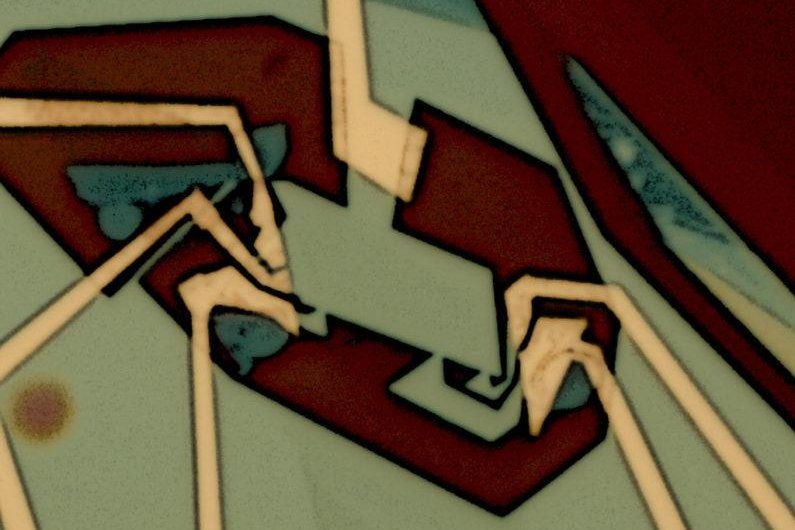Researchers combined graphene with boron nitride to create a superlattice material, host to a unique wave band in which electrons can be trapped without deflection. Photo by Menyoung Lee/Stanford
PALO ALTO, Calif., Oct. 3 (UPI) -- The terahertz gap is an unused portion of the electromagnetic spectrum comprising frequencies between radio waves and infrared radiation. No technologies currently utilize terahertz signals.
But that could soon change thanks to scientists at Stanford University, who recently developed a material that allows electrons to oscillate at terahertz frequencies.
Stanford professor and Nobel laureate Felix Bloch first theorized that uniquely structured materials could host terahertz oscillations several decades ago. Now, scientists believe they've turned theory into reality.
The key to hosting Bloch's oscillations is creating consistent nanoscale patterns so electrons can travel without interruption for significant distances. The ideal medium for such patterns are two-dimensional materials and superlattices, like graphene.
Graphene consists of atom-thick layers of carbon. The carbon atoms are arranged in a lattice or honeycomb-like pattern. Researchers found that when they sandwiched a sheet of graphene between two layers of boron nitride, electrons flow along a special wave interference pattern called a moiré pattern -- a pattern Bloch theorized could host terahertz signals.
If researchers can trap electrons within the narrow energy bands of the moiré superlattice for long enough, they should vibrate at terahertz frequencies. Now that they have a proper medium, researchers say they are a step closer to emitting and sensing of terahertz signals.
The moiré superlattice material also presented a surprising new electronic structure.
"In semiconductors, like silicon, we can tune how many electrons are packed into this material," David Goldhaber-Gordon, a physics professor at Stanford, said in a news release. "If we put in extra, they behave as though they are negatively charged. If we take some out, the current that moves through the system behaves as if it's instead composed of positive charges, even though we know it's all electrons."
In the new material, the opposite is true. Additional electrons produce a positive charge, while subtraction yields a negative charge.
Researchers say the new materials could ultimately inspire a variety of new technologies. Ultra-sensitive terahertz scanners could replace microwaves scanners at airport security checkpoints, for example.
"This is going to be an area that opens up a lot of new possibilities," said Goldhaber-Gordon, "and we're just at the start of exploring what we can do."
Researchers described their latest findings in the journal Science.















